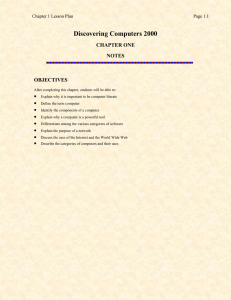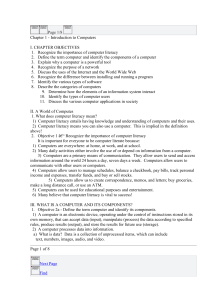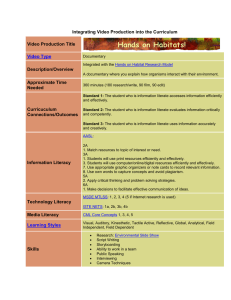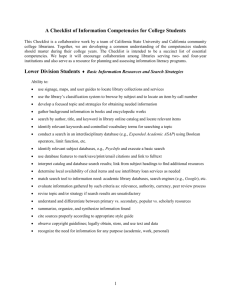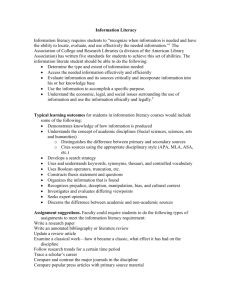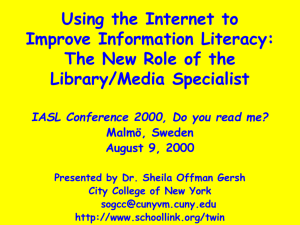Information Literacy Learning Outcomes for Lower Division General
advertisement
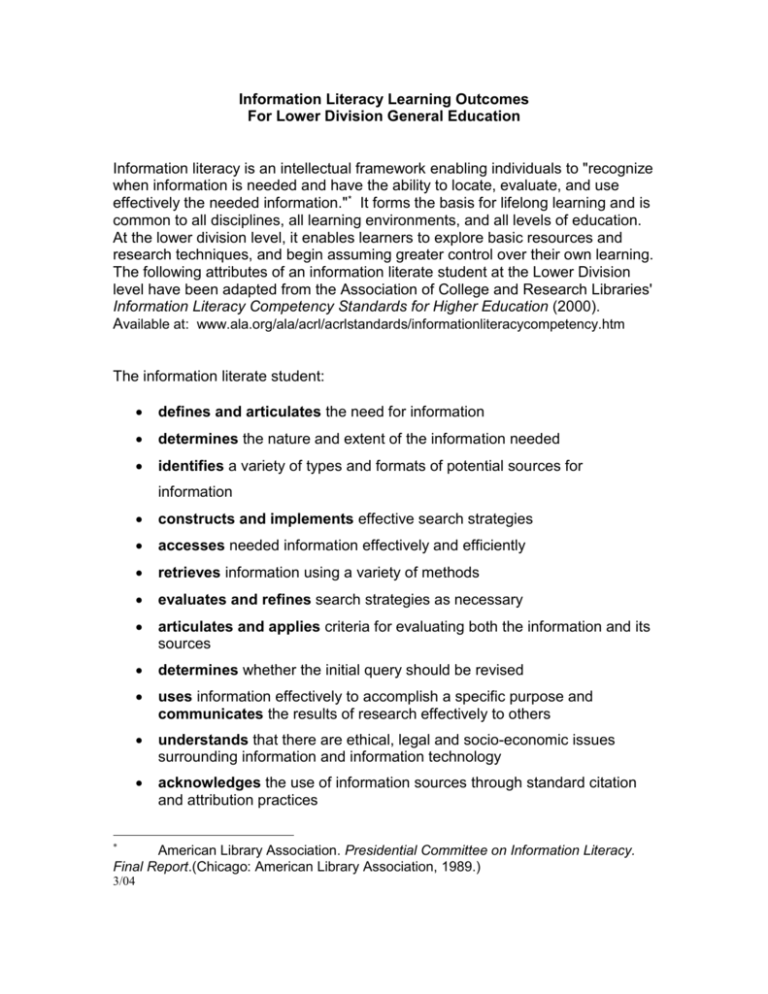
Information Literacy Learning Outcomes For Lower Division General Education Information literacy is an intellectual framework enabling individuals to "recognize when information is needed and have the ability to locate, evaluate, and use effectively the needed information."* It forms the basis for lifelong learning and is common to all disciplines, all learning environments, and all levels of education. At the lower division level, it enables learners to explore basic resources and research techniques, and begin assuming greater control over their own learning. The following attributes of an information literate student at the Lower Division level have been adapted from the Association of College and Research Libraries' Information Literacy Competency Standards for Higher Education (2000). Available at: www.ala.org/ala/acrl/acrlstandards/informationliteracycompetency.htm The information literate student: defines and articulates the need for information determines the nature and extent of the information needed identifies a variety of types and formats of potential sources for information * constructs and implements effective search strategies accesses needed information effectively and efficiently retrieves information using a variety of methods evaluates and refines search strategies as necessary articulates and applies criteria for evaluating both the information and its sources determines whether the initial query should be revised uses information effectively to accomplish a specific purpose and communicates the results of research effectively to others understands that there are ethical, legal and socio-economic issues surrounding information and information technology acknowledges the use of information sources through standard citation and attribution practices American Library Association. Presidential Committee on Information Literacy. Final Report.(Chicago: American Library Association, 1989.) 3/04


